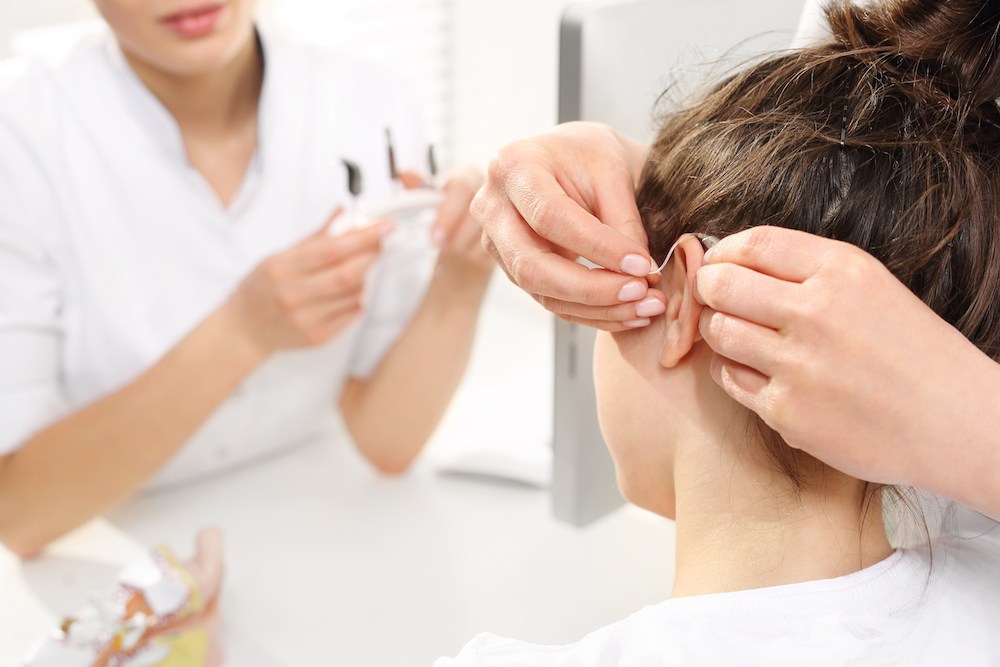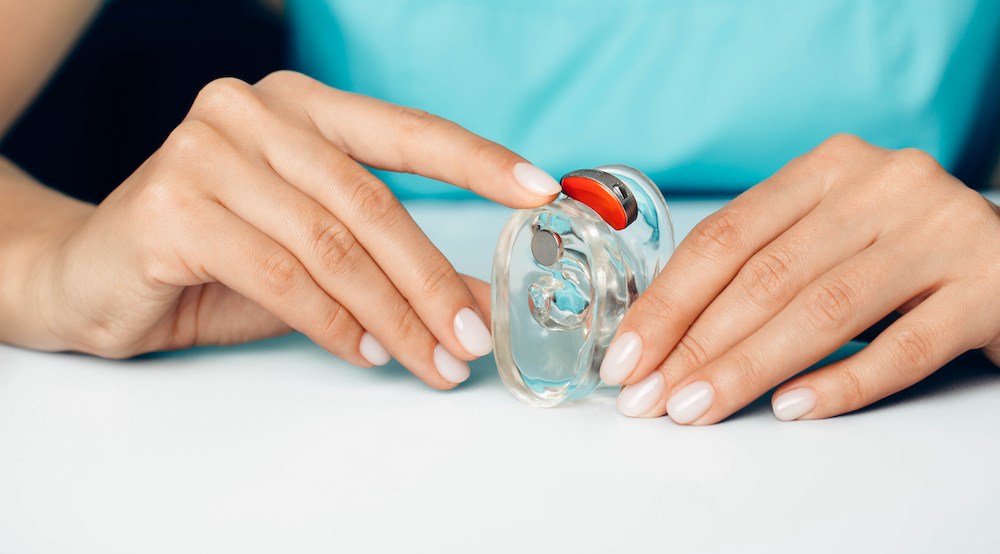Tips for Reducing Ear Fatigue
Ear fatigue is something many people experience, especially in today’s

By: admin | September 25, 2024
As we move toward a more eco-conscious world, sustainability is influencing every aspect of daily life – including hearing care. Hearing aids are now part of the conversation about reducing environmental impact. Like other electronics, they have traditionally relied on disposable batteries and materials that contribute to waste. However, the push toward renewable energy and greener practices offers an opportunity to reshape how hearing aids are made and used.
One of the most impactful changes is the development of rechargeable hearing aids. These devices help eliminate the need for single-use batteries, which can pile up in landfills and harm the environment. Rechargeable models not only offer a more sustainable option but also simplify daily life for wearers, as there’s no longer a need to frequently replace batteries. This shift reflects the broader trend of integrating renewable energy sources into personal electronics.
Renewable energy is more than just a trendy term; it’s an integral part of our future. This move toward sustainable energy solutions has significant impacts across all industries, including hearing healthcare.
When we think of renewable energy, wind turbines and solar panels often come to mind. But imagine if this green technology could extend to something as personal as your hearing aids. Researchers and audiologists are exploring ways to power hearing aids using renewable sources like solar energy or even body heat, bringing sustainability directly into everyday life. This concept is becoming more of a reality as advancements in green technology continue to evolve.
Let’s take a closer look at how hearing aids use energy today. Though small, they rely on efficient power sources to deliver the performance wearers need. Today’s hearing aids are technologically advanced, operating on minimal energy while delivering maximum performance. They use small batteries that need regular replacement or recharging, depending on the model. This energy consumption is an area ripe for improvements in efficiency and sustainability.
Researchers and audiologists are actively seeking ways to reduce this energy usage. The potential benefits are twofold – less strain on our planet’s resources and more convenience for you, the wearer.
Traditional hearing aids, while vital for improving the quality of life for those with hearing loss, have a notable environmental impact. A primary concern is the use of disposable batteries, which often need frequent replacement. With millions of hearing aids in use worldwide, the sheer volume of used batteries contributes significantly to hazardous waste. These small batteries contain chemicals like mercury and lithium, which, if not properly disposed of, can leak into soil and water sources, posing risks to ecosystems and human health. The cumulative effect of these discarded batteries adds up quickly, making it clear that traditional power sources in hearing aids aren’t as sustainable as they could be.
Beyond batteries, the production and disposal of hearing aids themselves also have environmental consequences. Hearing aids are typically made from plastic and electronic components, both of which require significant energy and resources to manufacture. When these devices reach the end of their lifespan, they often end up in landfills, where they contribute to electronic waste. This e-waste can take decades or longer to break down, releasing harmful substances into the environment during the process. The current production cycle for hearing aids, from manufacturing to disposal, leaves a considerable carbon footprint that calls for more sustainable alternatives.
As we continue our discussion on sustainability in hearing health care, let’s shift our focus to renewable energy. This might seem like a leap from traditional hearing aids, but it’s a vital piece of the puzzle for creating a more sustainable future.
Consider renewable energy as the superhero of sustainable living, swooping in to save the day with cleaner and more efficient power sources. Just like solar power can light up a home without relying on fossil fuels, imagine your hearing aids being powered by renewable energy sources like sunlight or body heat. This isn’t just wishful thinking – researchers and audiologists are already working on these innovations. The goal is to create a future where your hearing aids not only help you hear better but also contribute to a healthier planet.
One issue you might face with traditional hearing aids is the constant need for battery replacements or recharging. Solar-powered hearing aids offer a promising solution to this problem, harnessing the power of the sun to keep your devices running smoothly.
Solar-powered hearing aids are more than just a cool gadget; they’re a step towards sustainability and convenience. With these devices, you no longer have to worry about running out of batteries or finding a power source for recharging. Plus, you’re making a positive impact on our environment by reducing waste and energy consumption. It’s an exciting time in the world of hearing health care as we move towards greener solutions!
Let’s shift gears a bit and consider kinetic energy. This is the energy of motion – the energy you create when you move. Now, imagine if your hearing aids could tap into this power every time you take a step or simply nod your head. This isn’t just a fascinating concept; it’s an area where audiologists are focusing their efforts.
Harnessing kinetic energy for hearing aids could revolutionize the way we power these devices. It could mean saying goodbye to batteries and hello to self-sustaining, eco-friendly technology. As we strive for a balance between our healthcare needs and environmental responsibility, innovations like these are not just exciting; they’re essential!
Let’s consider the impact of battery-free hearing aids on reducing electronic waste, or e-waste, a growing global concern. Discarded batteries from hearing aids contribute to this problem. However, battery-free hearing aids present an effective solution. By eliminating the need for disposable or rechargeable batteries, these devices significantly reduce e-waste production. This innovation not only makes hearing aid usage more convenient for you but also plays a crucial role in our collective efforts towards environmental sustainability.
As we continue our conversation on sustainable hearing technology, let’s consider the role of thermoelectric materials. These unique substances can convert temperature differences into electricity, holding exciting potential for hearing aid innovation.
Thermoelectric materials work by exploiting the Seebeck effect – a phenomenon where a temperature gradient within a material can generate an electric voltage. Here’s how it could apply to hearing aids:
While the idea of green technology in hearing care is exciting, it’s not without its hurdles. Incorporating renewable energy into hearing aids presents unique challenges that require innovative solutions. For instance, ensuring consistent power supply from renewable sources and miniaturizing the technology to fit within compact hearing aids are significant tasks. Also, the durability and longevity of these green-powered devices under different conditions need careful consideration. Despite these challenges, the pursuit for sustainable hearing care continues unabated, driven by our commitment to a greener future and better hearing health.
Incorporating renewable energy into hearing aids presents a number of challenges, including maintaining a reliable power source, making the technology small enough to fit comfortably, and ensuring long-term durability. While these obstacles are significant, ongoing research and development are driving progress in overcoming them.
The goal of sustainable hearing care goes beyond just making eco-friendly devices. It’s about enhancing your quality of life while reducing environmental impact. By addressing these challenges, we can move toward a future where hearing aids not only improve your hearing but also play a part in protecting the planet.
Let’s consider the potential impact of renewable energy on hearing health. According to a report by the World Health Organization, over five percent of the world’s population – or 466 million people – have disabling hearing loss. This number is expected to rise to over 900 million by 2050. Now, consider this: if each one of these individuals were to use renewable energy-powered hearing aids, we could significantly reduce our carbon footprint while ensuring optimal hearing health care. The future intersection of renewable energy and hearing health holds exciting possibilities for both environmental sustainability and improved quality of life.
Every step towards sustainability counts. Even small changes like choosing solar-powered or battery-free hearing aids can have a big impact over time. These choices help reduce waste and conserve resources, paving the way for a greener future.
Stay informed about advancements in sustainable hearing technology. Being informed is powerful – the more you know about these innovations, the better equipped you’ll be to make environmentally friendly choices. Together, we can ensure that our pursuit of better hearing health doesn’t compromise our commitment to environmental stewardship.
Every choice counts when it comes to shaping a greener future for hearing care. By staying informed about advancements in sustainable technology and making environmentally friendly choices, we can collectively ensure that our pursuit of better hearing health aligns with our commitment to environmental stewardship.
Albuquerque Hearing and Balance is committed to helping you find your perfect solution, whether that’s something discreet and easy-to-handle or more sustainable hearing health options. Our dedicated team of audiologists is ready to provide more information about renewable energy-powered hearing aids and how they can fit into your lifestyle. Contact us at our Albuquerque, NM locations by calling (505) 750-9569 for more information or to schedule a consultation.
Tags: benefits of hearing aids, hearing aid repair, hearing aid styles

Ear fatigue is something many people experience, especially in today’s
By: admin | October 20, 2025

Hearing care looks nothing like it did even a decade ago. We’ve gone
By: admin | July 29, 2025

You probably already ask Alexa to play your favorite music, tell Siri to
By: admin | June 20, 2025
